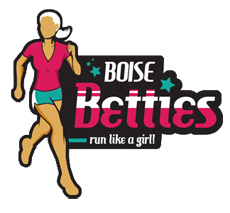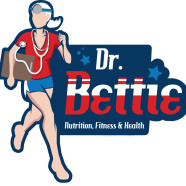DR. BETTIE: The Whole Grain and Nothing But the Grain
Welcome to Dr. Bettie’s Corner, your local expert in nutrition, fitness, and health! This is a bimonthly forum where we attempt to address Woman-focused topics of interest.We welcome your suggestions & questions! Please contact us with yours. The Whole Grain and Nothing But the Grain One of our athletes asked recently why many of us were raised on white rice and other refined grains when there appears to be much better alternatives out there. So I thought I would take a quick look at the history of refined grains in America and the benefits of whole grains for runners. I was raised in the south on sandwiches made of Wonder Bread, the quintessential bleached-white sliced sandwich bread. In the 1930s, Wonder Bread was the darling of the culinary world. It was one of the first sliced breads and its whiteness was seen as an indication of its cleanliness and purity: signs that it had been manufactured by a machine rather than dirty human hands. Indeed, Wonder Bread and other refined white grains like it were signs of the future! Not to mention they were fast and convenient! Remember those fun TV dinners? Oh wait, did someone say nutrition?! Health? Glycemic index? Perhaps these were not on the forefront of our parents’ and grandparents’ minds when they were caught up in the excitement of these new time-saving foods. So let’s talk about whole grains. When you take a grain such as wheat- which you use for bread- or rice in it’s whole form, it is full of vitamins and minerals. When you start to refine that grain (grind and/or bleach the wheat for flour or strip the rice) you begin to lose some of the nutrition. On the other hand, you also make it easier for the human body to digest. Some grains are tough on the body and if we ingest them in their natural form they would go right through us and we would not get a lot of the nutrition anyway. So a little refinement is okay. But the further away we get from the natural state of the grain, i.e. the less “whole” the grain is, the less nutrition we are getting. Let’s take a look at this interesting study that was done with obese adolescents with oatmeal in order to compare instant oatmeal and steel-cut oats. To make steel-cut oats the oats are sliced a couple of times so that the oats can cook, however, the the structure of the oat kernel is maintained. Instant oats are more processed. However, the food’s calories, fiber and carbohydrates are the same. Both groups of adolescents were given the same amount of food, but the group given instant oatmeal saw a much higher rise in blood sugar than the steel-cut oats group and were hungrier a few hours later. This difference was caused only by the form of the food that was ingested, not the actual food itself! So it may be worth it to take the extra time to make those steel-cut oats in the morning! What about shopping for breads, cereals and other grains? Look for whole grain cereals that have some fiber and protein. The fiber and protein help slow the digestion process. Just because bread is brown does not mean it is not overly processed. Read the labels and make sure it is made with “whole wheat” flour and not “enriched” flour. And don’t be afraid to try other varieties of whole grain breads such as buckwheat, rye and oat. Peanut butter or any other nut butter on a slice of whole grain bread makes...
Read MoreFall Membership Special
Training for a fall marathon or half marathon? Nervous about the goals you set- whether to run faster than ever or simply to finish your first long race? Consider a running club to help you meet your goals and have fun along the way! This Tuesday, Sept 9, join us for our 6AM workout and experience firsthand how The Betties can help you meet your goals. The workout is free and membership/coaching specials will be available to those join us for the workout. Must be present to purchase the specially priced coaching package. Meet at Boise High School’s track on 11th and Washington at 6AM, ready to run! See you there! Questions? Contact us...
Read MoreDR. BETTIE- Cardiac Problems in Endurance Athletes
Welcome to Dr. Bettie’s Corner, your local expert in nutrition, fitness, and health! This is a bimonthly forum where we attempt to address Woman-focused topics of interest.We welcome your suggestions & questions! Pleasecontact us with yours. Cardiac Problems in Endurance Athletes We all know that exercise is good for your heart. It decreases blood pressure, lowers blood cholesterol, maintains healthy body weight, and diminishes your risk of developing chronic diseases including diabetes mellitus. But are there instances when exercise – specifically, endurance exercise such as distance running – may be harmful? I grit my teeth as I painfully type the word “Yes”… But, yes. Even if your brain and your spirit crave that morning glide through the heathery foothills, there may be a few things to think about before pronouncing to the world that THIS is THE BEST way to maintain a happy heart. The scary stuff. These are the unpredictable, and often inherited, problems that result in sudden death. It can include structural problems with the muscle of the heart itself (e.g., hypertrophic cardiomyopathy), valve problems (e.g., aortic stenosis), electrical problems resulting in abnormal coordination of the pumping action (e.g., Wolff-Parkinson-White syndrome, long QT syndrome), or plumbing problems where the blood supply does not get to the muscle normally, creating an oxygen deficit (known as congenital anomalies of the coronary arteries). Fortunately, they are uncommon. But for those that do have these problems, endurance exercise is more or less forbidden. Athlete’s heart. It is well recognized that the heart muscle experiences structural changes with exercise, commonly observed as a global thickening of the main pumping chamber. (Not surprising, considering that structural changes with every other muscle in your body occur with exercise as well.) Historically, this has not been considered a bad thing, and has been shown to reverse after training is discontinued. However, there has recently been a body of literature that suggests some of this remodeling effect observed in high level athletes – which specifically includes enlargement of the one of the upper chambers of the heart – may serve as a nidus for an annoying, though usually not life-threatening, rhythm problem known at atrial fibrillation. The data are not perfect here, but multiple studies from several countries have replicated this association, and the increased risk appears to be pretty substantial (2-10x increased risk). Is this You, you may ask? Well, the answer is, we just don’t know. “High level” has had multiple definitions: 3 hours or more per week of intense training, 1500 lifetime hours of endurance exercise, being within the highest category of a large population polled, or simply just participating in a couple of long distance events (marathons, the Tour de France, cross-country ski races… Who cares, those crazy endurance people are all alike anyway, right?!). To say the least, the optimal dosing of frequency and intensity of endurance training has yet to be determined. And to add insult to injury… We don’t know the risk among women, as they have been underrepresented in these studies. Are there other risks? The main risk with atrial fibrillation includes stroke. However, most athletes have few risk factors that make this a major concern. Talk to your doctor. Gimme some good news?!!. Low to moderate amounts of exercise show NO such association with atrial fibrillation. Among those afflicted, detraining may help – a few weeks off, then a couple of 3-4 mi runs per week may be tolerated. Lastly, there are effective medical therapies also available. When to worry/seek help. If you experience chest discomfort, unusual breathing trouble, sudden exercise intolerance, and/or lightheadedness with exercise,...
Read MoreJust Who Is Dr. Bettie?
Just Who Is Dr. Bettie? Actually, there are two Betties on the job! The Boise Betties are lucky to have such a wealth of knowledge and research abilities on the team- and these two women came forward asking for the job. I didn’t even know we needed a Dr. Bettie and yet I find their articles so interesting and relevant. What question do you have for the Drs? Dr. Jennifer Anderson is a board certified cardiologist with practice locations in both Boise and Eagle, Idaho. She received her medical degree from the University of Washington School of Medicine, and completed a fellowship in cardiovascular disease at Wake Forest University in North Carolina. Dr. Anderson’s career journey began with graduate work in both Exercise Physiology as well as Nutritional Sciences, giving her patients comprehensive, innovative care that emphasizes lifestyle intervention and disease prevention. She ran competitively for the University of Maine and still holds a place among their all time top runners in the 10,000m race. Samia McCall boasts a background in law with a degree from American University in Washington, DC and maintains bar membership in three states. As a self described “research monkey”, Samia’s curious mind leads her to research and answer questions from an incredible variety of topics- particularly those tying back to her passion for running. As an empathetic teammate and runner who has suffered her fair share of injuries, Samia brings thorough research to the table for each Dr. Bettie post. She is an accomplished runner, and is finding her stride again after a plague of injuries over the past few years. In her first race back Samia beat her Robie Creek personal best (set nearly 7 years ago before she had children!). Check out Dr. Bettie’s previous articles here: To Beer or Not To Beer? Strategies for Diminishing Body Fat Hips Don’t Lie Five Ways to Avoid Needing a Cardiologist ...
Read MoreDR. BETTIE- To Beer or Not To Beer: That is the Question
Welcome to Dr. Bettie’s Corner, your local expert in nutrition, fitness, and health! This is a bimonthly forum where we attempt to address Woman-focused topics of interest. We welcome your suggestions & questions! Please contact us with yours. To Beer or Not To Beer: That is the Question If you are anything like me, you might think that one of the best things about a good race or a long run is treating yourself to a beer (or three) at the end of it. But is this kind of indulgence helpful or hurtful to our training? Believe it or not there are several health benefits to beer. For starters, it can help re-hydrate you after a long run or race. In a 2013 study, researchers at Granada University in Spain found that beer actually helped hydrate better than water or Gatorade after a workout. Next, beer is good for your bones. It contains silicon which helps increase bone density. Increased bone density can help guard against stress fractures. Beer also contains B Vitamins, and a researcher at Oregon State University found that lager beer in particular contained more antioxidantsthan green tea. And you all just thought I was drinking the beer for the head buzz! But there is the social aspect of it too. Us runners can be fun-deprived at times (well, at least this one can). We go to bed early on Friday nights to get up early for long runs on Saturdays, and we think the idea of good summer fun is cramming into a van with a bunch of our friends to spend all day running up and down a mountain together. So a beer with a friend at the end of a long run or a few drinks at the end of a race is a great time for us to fraternize, build camaraderie, and get to know each other a little bit more. This in turn can help release mood-boosting endorphins which will have a positive effect on our mental well-being. Being social and having fun, with or without the beer in hand, helps us encourage each other which can help keep us consistent in our training and racing. As long as you do not indulge to the point that you are getting sick or feeling horrible the next day, it should not affect your fitness or training. And if beer is not your thing, no worries. There’s usually water and protein-packed chocolate milk at the finish line too. And once you’re done drinking those, would you mind giving me a ride...
Read More





